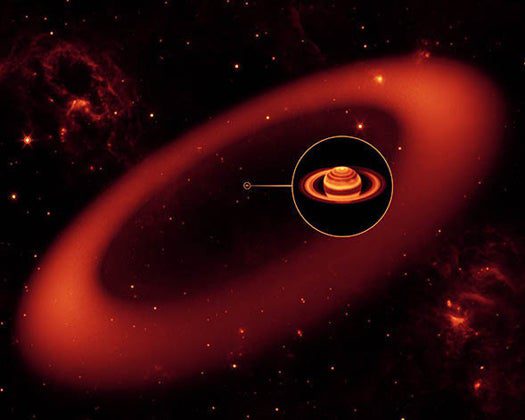In a shared office on the southern edge of Caltech’s campus, Robert Hurt and Tim Pyle are making art out of science. Armed with the industry standards–Photoshop, Illustrator, After Effects–it’s their job to break down the Spitzer Space Telescope’s complex scientific data into visualizations that are accessible and meaningful to the average viewer. But their artistic challenge is unique: Human eyes have never seen the objects they are creating.
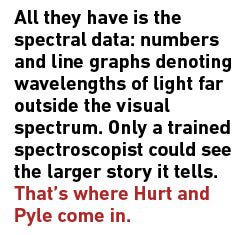
Spitzer’s infrared instruments return reams of data to Earth as the orbiting observatory gathers light from far reaches of the universe, light that is invisible to the naked eye. Imaging instruments capture some visual data that specialized software can cobble together into composite images, but often Spitzer’s most interesting discoveries come from regions of space too distant or obscure for the imagers to capture. In those cases, all they have is the spectral data; numbers and line graphs denoting wavelengths of light far outside the visual spectrum. Only a trained spectroscopist could look at that data and see the larger story it tells.
That’s where Hurt and Pyle come in. Dr. Hurt is the Spitzer Science Center’s visualization scientist. Along with animator and graphic artist Tim Pyle, it’s his job to convert the cascading numbers and EKG-like line graphs that are the core of Spitzer science into images and animations that make sense to those of us who can’t see the remnants of a supernovae or a planetary debris ring in the data. Those illustrations and animations end up everywhere from press releases to educational materials to the History Channel.
Click here for an annotated gallery of Hurt and Pyle’s all-time favorite illustrations.
“We take data and try to make it visually interesting,” Hurt says of their work, which includes turning invisible light into colors that we can see, while employing a restrained brand of artistic license that must constantly balance hard science with aesthetic appeal. “You have to make these things interesting enough so someone will read your story. If your image is flat and dull, no one is going to read the text.”
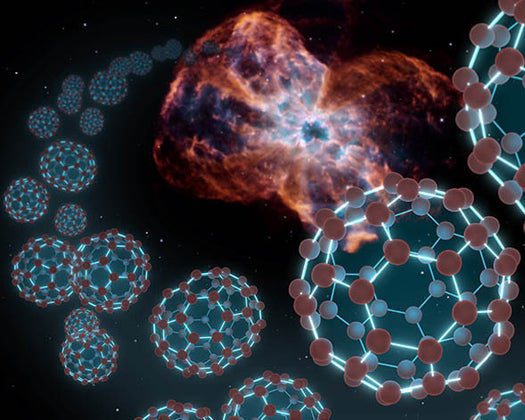
Buckyballs in Space
Doing so can be easier said than done. For instance, Spitzer’s recent discovery of buckyballs in space–rare 60-atom carbon molecules that had never before been seen outside of Earth–provided them with an opportunity to attempt a stunning illustration: complex atomic structures backlit by a beautiful planetary nebula. But by a less romantic description, the task was to visually render individual molecules floating loose in space some 6,000 light years away.
“A lot of the stuff we’ve never seen, and that opens up creative choices,” Hurt says. “The difference between us and a Hollywood blockbuster is that we have to keep it tied to the science as closely as possible.”
To do so, the duo plays to each other’s strengths. Hurt, a trained astronomer with a Ph.D. in Physics from UCLA, works closely with the principal researchers at Spitzer to define the scientific constraints for a given illustration. Pyle then begins making the artistic decisions that will get them from raw data to visualization.
In the case of the buckyballs illustration, the constraints were fairly straightforward; they needed to show that the molecules are in space, that they have a unique and interesting molecular structure, and that they are associated with a faraway planetary nebula. But beyond that, the science didn’t lend very many cues as to how a visual depiction should come together. After all, a buckyball is very tiny, and the universe is very big.
“What looks cool and what’s real don’t always line up,” Hurt says, “but generally we can find a compromise.” For the buckyballs, Pyle turned out a simple but mesmerizing rendering of the buckyballs magnified in the foreground to relay the idea that they are tiny (in this case, microscopic) relative to the vast expanse of space behind, which is slightly out of focus to drive home the sense of perspective. The cloud of gas and dust behind the buckyballs isn’t actually the same nebula where the buckyballs were discovered, but rather a Hubble Space Telescope image of a nearby nebula. Spitzer’s composite image of the actual cosmic backdrop simply didn’t convey the crisp, dazzling canvas that the data described.
When images alone can’t capture the full significance of the data, Hurt and Pyle turn to animation to breathe further life into their work. Buckyballs, for instance, have a unique spherical structure of atomic bonds that create a hexagon-pentagon structure (like that of a soccer ball) with atoms residing at the vertices. That structure is flexible rather than rigid, so the molecules jiggle like Jell-O as they move about.
Hurt and Pyle did a few animated test renders of these molecular vibrations just to see what they looked like in motion. Not only did the other researchers at the Jet Propulsion Lab like what they saw, but they realized that to their knowledge no one had done a really good buckyball animation before. These are the kinds of stories Hurt and Pyle tell best. Readers could pore over academic papers about the physical properties of buckyballs, but a 16-second animation describes their motion more easily and arguably more thoroughly.
Once complete, their work goes directly into the public domain via NASA, and it often turns up in unexpected places. Aside from the venues one might expect to find detailed NASA artwork–their representations routinely appear on television series like the “The Universe” and “Known Universe”–they’ve spotted their work in a Microsoft graphics benchmarking program, in advertisements shilling everything from dental services to opera performances, and even tacked to the wall of the set of the television show “The Big Bang Theory.”
Hurt and Pyle don’t so much mind where their work ends up as long as it’s doing its job. Even if it’s in an ad for a dentist’s office tacked up in the D.C. subway, their work distills distilling Spitzer’s complex data into something we civilians can appreciate, stoking our interest in space science along the way.
“We’re just very interested in using imagery to bring scientific data to life,” Hurt says. “It’s a great educational calling.”
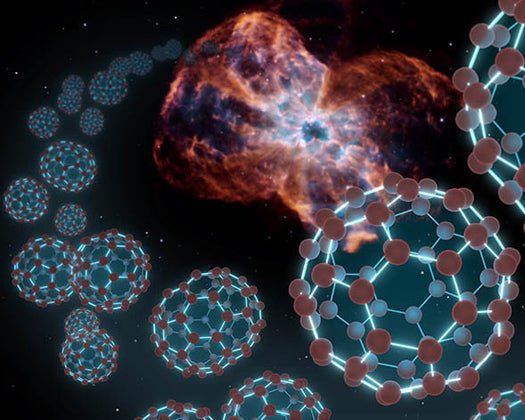
Space Balls
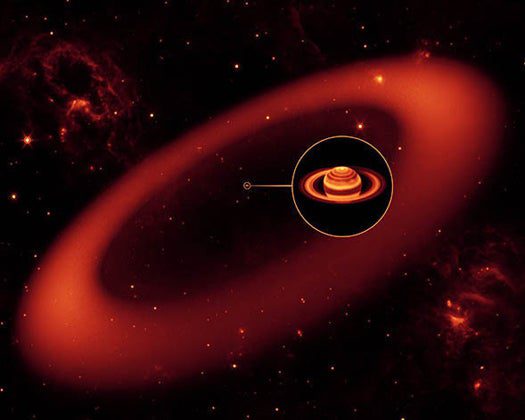
Saturn’s Secret Ring
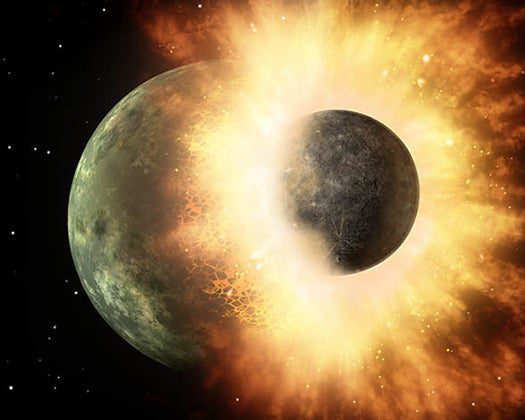
When Worlds Collide
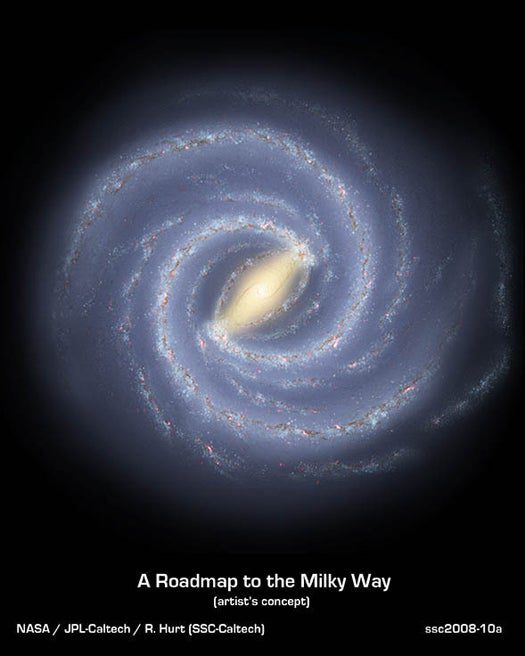
Mapping the Milky Way
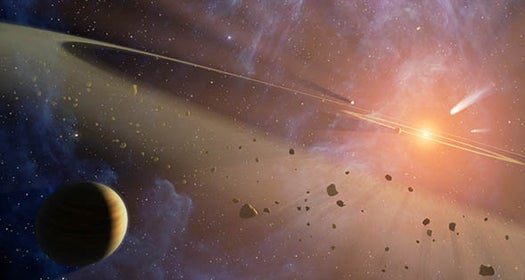
Searching for Sci-Fi in Epsilon Eridani
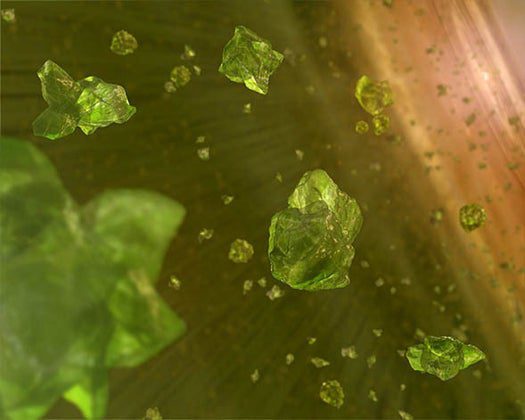
Seeding the Universe with Planets
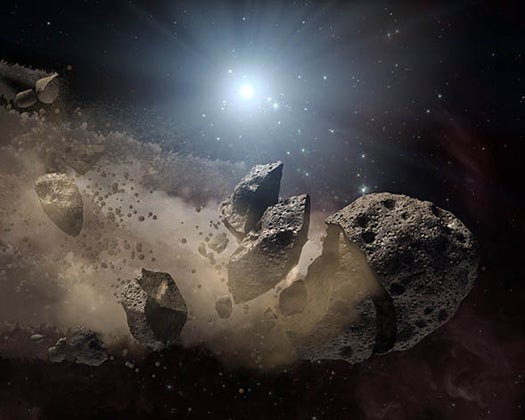
A Dead Star Shares its Fate with an Asteroid
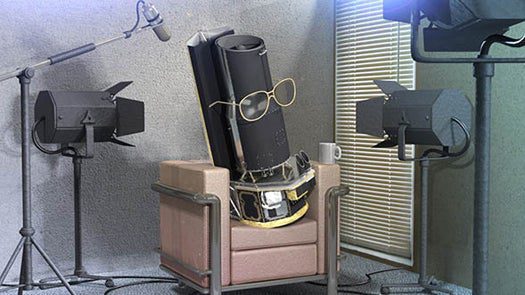
Spitzer’s Sense of Humor





